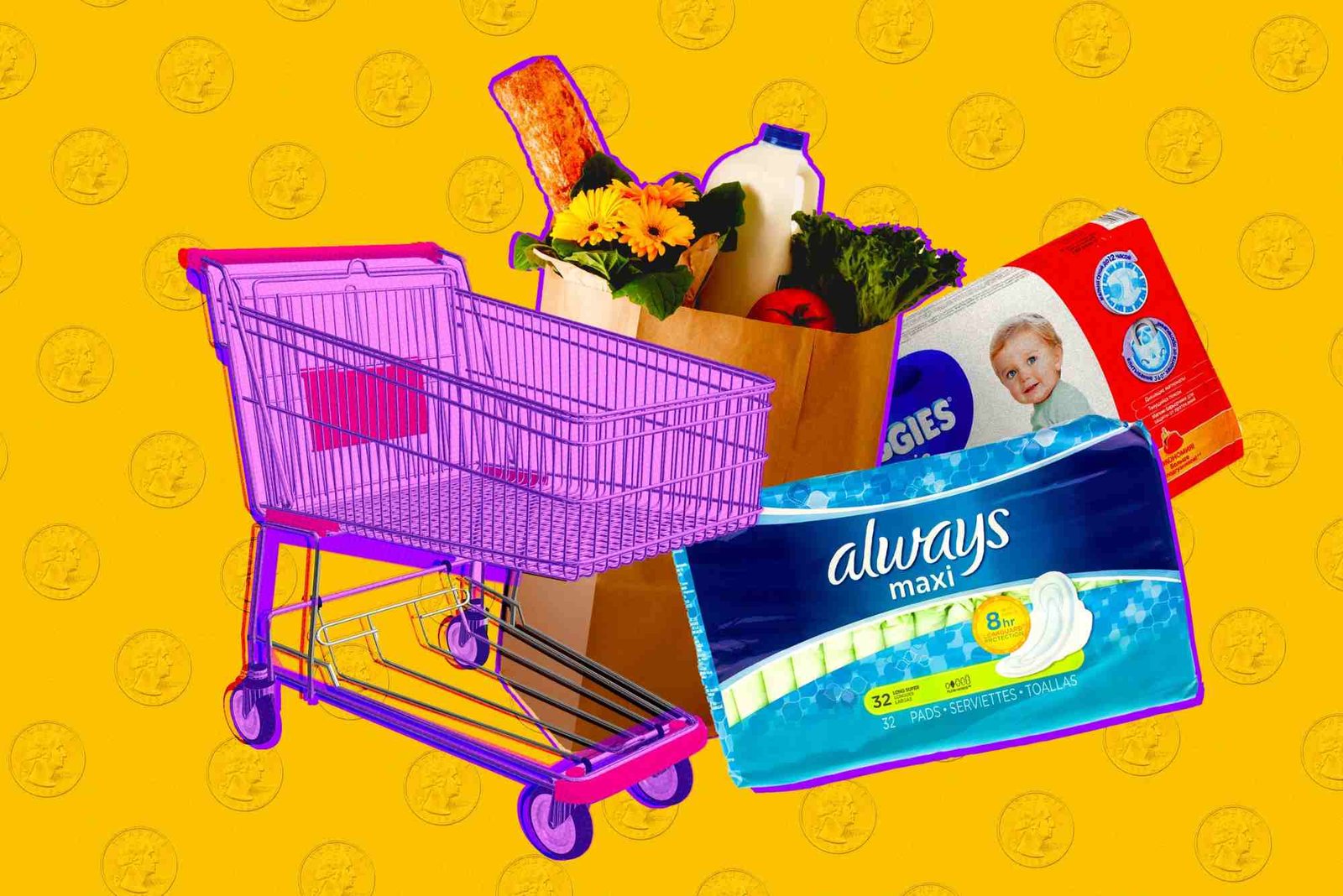Introduction
When shopping in Canada, understanding taxes is essential to avoid surprises at checkout. From grocery stores to luxury boutiques, taxes can vary depending on the province, the type of goods, and whether the item is for personal use or business purposes. Learning the basic rules of Canadian shopping taxes helps shoppers make informed decisions and ensures a smoother shopping experience. This guide explains Canada shopping taxes in simple terms, helping you know what to expect before you pay.
Understanding Canada’s Tax System
Canada has a layered tax system that includes federal and provincial taxes. The two main types of taxes affecting shoppers are the Goods and Services Tax (GST) and the Provincial Sales Tax (PST). In some regions, these taxes are combined into the Harmonized Sales Tax (HST). Knowing the differences can prevent confusion when seeing varying rates across provinces.
Goods and Services Tax (GST)
GST is a federal tax applied to most goods and services in Canada. The current rate is 5%, and it applies across all provinces. GST is added at the point of sale, which means the price on the shelf does not always include this tax. Certain essential items, such as most groceries, residential rent, and medical services, are exempt from GST.
Provincial Sales Tax (PST)
PST is levied by individual provinces and varies in rate. Provinces like British Columbia, Saskatchewan, and Manitoba have separate PST systems, typically ranging between 6% and 8%. Some provinces exempt certain products, especially necessities like food and prescription medications, from PST.
Harmonized Sales Tax (HST)
In provinces like Ontario, Nova Scotia, New Brunswick, Prince Edward Island, and Newfoundland and Labrador, GST and PST are combined into HST. This unified tax simplifies shopping by applying a single rate that varies by province, generally ranging from 13% to 15%.
How Taxes Affect Different Purchases
Taxes in Canada are not one-size-fits-all. Different categories of purchases experience distinct tax rules. Understanding these differences ensures accurate budgeting and prevents unexpected costs.
Everyday Goods
Most everyday items, including clothing, electronics, and household goods, are subject to GST or HST. In provinces with separate PST, an additional provincial tax applies. For example, a $100 jacket in British Columbia would include 5% GST plus 7% PST, totaling $112.
Groceries and Food Items
Canada exempts most basic groceries from GST and PST to reduce the cost burden on families. Fresh fruits, vegetables, meat, dairy, and bakery items are generally tax-free. However, prepared meals, snacks, and beverages often include taxes. Knowing this distinction helps shoppers avoid overpaying and plan meals economically.
Alcohol and Tobacco
Alcoholic beverages and tobacco products are heavily taxed. These items usually include GST or HST, plus additional provincial excise taxes. Prices in stores reflect these taxes, and they are non-negotiable. Shoppers should anticipate higher costs for these products compared to everyday goods.
Luxury Items
High-value items like jewelry, designer fashion, or electronics attract full GST or HST rates. Certain provinces may also include luxury taxes for extremely high-priced goods. Planning large purchases while factoring in taxes can prevent budget surprises.
Online Purchases
Shopping online within Canada still incurs taxes, similar to in-store purchases. Retailers are responsible for charging GST, PST, or HST depending on the buyer’s location. International online orders may include customs duties and import taxes, so the final price can exceed the listed amount.
Shopping Tax Refunds and Exemptions
Canada offers limited tax refunds for non-residents and specific exemptions under certain conditions. Understanding eligibility is key for travelers and business buyers.
Visitor Refunds
International visitors to Canada cannot generally claim GST or HST refunds for regular shopping. However, some provinces may allow partial refunds on goods purchased and exported within a specific timeframe. Always check provincial rules before assuming eligibility.
Business Exemptions
Businesses registered for GST or HST may reclaim taxes paid on purchases used for commercial purposes. This rebate is called an input tax credit, and it reduces overall business costs. Knowing which items qualify is crucial for accurate accounting and tax reporting.
Special Situations
Certain products like medical devices, public transit passes, and charitable donations enjoy exemptions or reduced tax rates. Being aware of these categories can help shoppers save money while purchasing essential goods or supporting causes.
Provincial Tax Rates Overview
Canada’s tax landscape varies by province. A clear understanding of local rates ensures transparency while shopping.
Western Canada
In British Columbia, the GST rate is 5% with a 7% PST. Alberta stands out with a 5% GST and no provincial sales tax. Saskatchewan applies 6% PST on top of the 5% GST, while Manitoba charges 7% PST.
Central Canada
Ontario applies a 13% HST, combining GST and provincial tax. Quebec has a 9.975% Quebec Sales Tax (QST) in addition to the 5% GST. These rates influence everything from grocery bills to electronics purchases.
Eastern Canada
Nova Scotia, New Brunswick, Prince Edward Island, and Newfoundland and Labrador charge HST ranging from 13% to 15%. These unified taxes simplify the checkout process, but the total cost is higher compared to provinces with separate GST and PST systems.
Tips for Smart Shopping
Understanding Canada’s tax rules allows shoppers to optimize spending and avoid surprises.
Compare Before Buying
Since tax rates differ across provinces, comparing prices before purchasing can reveal savings opportunities. Online shopping Places tools and store apps often display final prices with taxes included.
Factor Taxes Into Your Budget
Taxes can significantly impact the total cost of purchases. Adding 5% to 15% to the listed price when planning your shopping ensures you remain within budget.
Look for Tax-Free Items
Focusing on exemptions like basic groceries, prescription medications, and medical supplies can reduce spending. Checking labels or store policies helps confirm tax-free eligibility.
Keep Receipts
For business purposes, refunds, or warranty claims, keeping receipts with tax information is essential. Receipts document the exact tax paid and serve as proof for any necessary claims or deductions.
Plan Large Purchases Strategically
Large electronics or luxury items may attract high taxes. Timing purchases around promotions, rebates, or provincial tax holidays can maximize savings. Some retailers offer limited-time deals that include tax incentives.
Common Misconceptions
Many shoppers misunderstand Canadian tax rules, leading to confusion or overpayment. Clarifying these points helps shoppers avoid errors.
Misconception 1: All Provinces Charge the Same Tax
Tax rates and rules vary widely. Assuming a universal rate can result in surprises at checkout. Always verify the local GST, PST, or HST rate.
Misconception 2: Online Shopping Avoids Taxes
Canadian law requires online retailers to collect taxes based on the buyer’s location. International shipping may add customs duties, so online deals are not always cheaper.
Misconception 3: All Food Is Tax-Free
Only basic groceries are exempt. Prepared meals, snacks, and beverages often include taxes. Clarifying which items are exempt saves money and prevents misunderstanding.
Understanding Canada shopping taxes is simple if you know the basic rules. GST, PST, and HST apply differently depending on the province and type of purchase. From everyday items to luxury goods, taxes impact final prices, and careful planning ensures a stress-free shopping experience. By factoring in taxes, checking exemptions, and keeping receipts, you can shop confidently in Canada without unexpected costs.
Next time you shop in Canada, remember these rules, calculate taxes ahead, and enjoy smarter spending. Being informed saves money and time, turning every purchase into a seamless experience.
FAQ
Are groceries taxed in Canada?
Most basic groceries, including fresh fruits, vegetables, meat, and dairy, are exempt from GST and PST. Prepared foods and snacks may be taxed.
Do tourists pay sales tax in Canada?
Yes, tourists pay GST, PST, or HST like residents. Some provinces may offer partial refunds on exported goods under certain conditions.
What is the HST in Canada?
HST, or Harmonized Sales Tax, combines federal GST and provincial PST into one rate, applied in provinces like Ontario, Nova Scotia, and New Brunswick.
Can businesses reclaim taxes?
Yes, businesses registered for GST or HST can reclaim taxes paid on eligible purchases through input tax credits.
Does online shopping include taxes?
Yes, Canadian online retailers must charge taxes based on the buyer’s province. International orders may include customs duties and import taxes.




